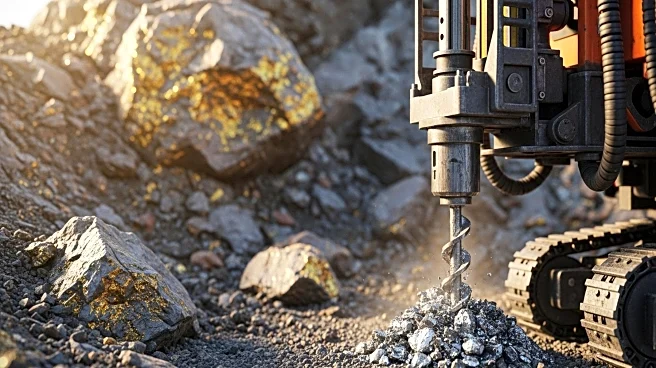What is the story about?
What's Happening?
Researchers have discovered new insights into the origins of the Iron Age through a 3,000-year-old smelting workshop in Kvemo Bolnisi, Georgia. Anthropological archaeologists Nathaniel Erb-Satullo and Bobbi Klymchuk from Cranfield University in the UK conducted a fresh analysis of the site, which was previously believed to have produced iron due to the presence of hematite and slag waste. Their study revealed that iron oxide was used as a flux in copper production, suggesting that iron was discovered through experimentation in copper smelters rather than developed separately. This finding provides evidence of intentional use of iron in copper smelting processes, indicating that metalworkers understood iron oxide as a separate material and experimented with its properties. The Iron Age marked a significant period of change, with advancements in farming, warfare, and tool development.
Why It's Important?
The discovery at Kvemo Bolnisi offers valuable insights into the technological advancements that shaped human history during the Iron Age. Understanding the origins of iron production is crucial for comprehending the development of metallurgy and its impact on societal progress. The research highlights the role of experimentation in technological innovation, which has implications for modern scientific approaches. By uncovering the methods used by ancient metalworkers, researchers can better understand the transition from the Bronze Age to the Iron Age, a period marked by significant changes in agriculture, warfare, and trade. This knowledge contributes to the broader understanding of historical technological evolution and its influence on contemporary practices.
What's Next?
Further research and analysis of archaeological sites like Kvemo Bolnisi are expected to continue, as advancements in chemical analysis techniques and tools provide new opportunities to reassess historical evidence. Researchers may explore other sites with similar characteristics to validate the findings and expand the understanding of iron production origins. The study encourages a reevaluation of existing theories about the development of metallurgy and the factors influencing technological progress during the Iron Age. Continued exploration of ancient smelting sites could reveal additional insights into the cultural and economic dynamics of the period.
Beyond the Headlines
The research at Kvemo Bolnisi underscores the importance of interdisciplinary approaches in archaeology, combining modern geological and materials science techniques to uncover historical secrets. The study also highlights the significance of seemingly mundane materials, such as slag, in providing valuable information about ancient practices. This approach reflects a broader trend in archaeology, where advanced scientific methods are used to gain deeper insights into historical contexts and technological developments.
AI Generated Content
Do you find this article useful?















